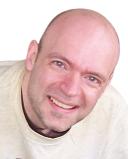By Geoff Goodman PhD
“Many scientific research studies conducted since AASECT’s 2016 position statement attest to the reality of sex addiction. It afflicts roughly 8.6 percent of the general population.”
In November 2016, the American Association of Sexuality Educators, Counselors and Therapists (AASECT) published a position statement on sex addiction. The organization wrote that it “does not find sufficient empirical evidence to support the classification of sex addiction or porn addiction as a mental health disorder”. As a card-carrying member of AASECT, I can honestly say that this organization does good work in promoting sexual health through its sex education, public advocacy, and individual treatment efforts. I’d like to examine their take.
In the intervening eight years, a significant body of research has been conducted to support the concept of sex compulsion, or addiction. Most significantly, the World Health Organization (WHO; 2022) recognized Compulsive Sexual Behavior Disorder (CSBD) as a bona fide psychiatric illness, which was codified in that organization’s most recent edition of the mental health profession’s diagnostic standard, the International Classification of Diseases (ICD-11).
Reviewing the ICD-11’s diagnostic criteria, CSBD shares many features with known addictive disorders (for example, gambling disorder). Two noted researchers of CSBD, Lew-Starowicz and Coleman (2022), concluded: “While ongoing considerations on compulsive sexual behavior as addiction or impulse control disorders might be seen as a step backwards, more attention should be given to further explore the neurocognitive, affective (dysregulation of emotion), interpersonal (attachment issues, sexual trauma), and the role of religiosity and moral incongruence aspects of this clinical phenomenon” (p. 228).
Fortunately, recent evidence has been published exploring just these aspects of CSBD. Just last year, Görts and his colleagues (2023) found that “CSBD is associated with structural brain differences” (p. 1). Specifically, CSBD patients had significantly lower cortical surface area in the right posterior cingulate cortex than a sample of healthy controls. The authors also found negative correlations between the right posterior cingulate area and CSBD symptoms scores.
Similarly, Liberg and his colleagues (2022) demonstrated that CSBD is associated with altered behavioral correlates of anticipation, which were associated with ventral striatum activity during anticipation of erotic stimuli, compared to healthy controls. They concluded: “This supports the idea that addiction-like mechanisms play a role in CSBD” (p. 1). The two studies represent just the types of neurocognitive evidence Lew-Starowicz and Coleman (2022) were seeking.
In addition, Lewczuk and colleagues (2022) demonstrated that both withdrawal (for example, irritability, insomnia, brain fog) and tolerance (for example, needing greater sexual stimuli to achieve the same effect)—signature features of addictive processes—were significantly associated with the severity of CSBD and problematic pornography use. The authors concluded: “Changes related to mood and general arousal noted in the current study were similar to the cluster of symptoms in a withdrawal syndrome proposed for gambling disorder and internet gaming disorder in DSM-5” (p. 1).
I should note that all the journal articles cited here were published in the Journal of Behavioral Addictions, which has an extremely high impact factor of 7.772. In short, the evidence for the existence of CSBD as well as its addictive features is mounting, and evidence of its similarity to other behavioral addictions such as gambling disorder and Internet gaming disorder is also mounting.
Some sex therapists skeptical of the idea that sex can be addictive (like many other rewards) make a distinction between “sexually compulsive behavior” and “sex addiction”, highlighting that the ICD-11 does not mention the term “sex addiction”. In fact, no addiction is called “addiction” in the ICD-11. For example, opioid addiction, which is an epidemic in this country, is labeled “opioid related disorders”.
Second, it is true that CSBD was placed in the “impulse control disorders” category of disorders rather than the “disorders due to substance use or addictive behaviors.” It is important to point out that this is precisely the path that gambling disorder took, first listed under impulse control disorders, now listed under disorders due to substance use or addictive behaviors. It is therefore premature to say that the ICD has foreclosed on moving CSBD to the latter category; in fact, several members of the ICD CSBD workgroup are already advocating for placement in the latter category for ICD-12.
Some sex therapists also complain that people who report having sex addiction are labeling their behavior as addictive because their religious beliefs and their sexual behavior are morally incongruent and that they are really suffering from shame rather than a psychiatric illness. But as Reed and his colleagues (2022) indicate in their recent World Psychiatry review of the CSBD diagnostic criteria, “The ICD-11 makes clear that distress related to the individual’s (or others’) moral judgments and disapproval related to sexual impulses, urges, or behaviours that would otherwise not be considered indicative of psychopathology is not an appropriate basis for diagnosing compulsive sexual behaviour disorder” (p. 202). Thus, persons who suffer primarily from shame and moral disapproval of their sexual behavior are automatically disqualified from meeting the CSBD diagnostic criteria. Concerns that sex addiction and CSBD reflect moralistic biases may be unfounded.
Eight years later, the data are in. Many scientific research studies conducted since AASECT’s 2016 position statement attest to the reality of sex addiction. It afflicts roughly 8.6 percent of the general population, including almost a 1:4 ratio of women to men (Sahithya and Kashyap, 2022).
It’s time to focus now on treatment rather than nomenclature.
References
American Association of Sexuality Educators, Counselors and Therapists. (2016). AASECT position on sex addiction. https://www.aasect.org/position-sex-addiction
American Society of Addiction Medicine. (2011). Public policy statement: Definition of addiction. https://www.asam.org/docs/default-source/public-policy-statements/1defi…
Görts, P., Savard, J., Görts-Öberg, K., Dhejne, C., Arver, S., Jokinen, J., Ingvar, M., & Abé, C. (2023). Structural brain differences related to compulsive sexual behavior disorder. Journal of Behavioral Addictions, 12, 278–287. https://doi.org/10.1556/2006.2023.00008
